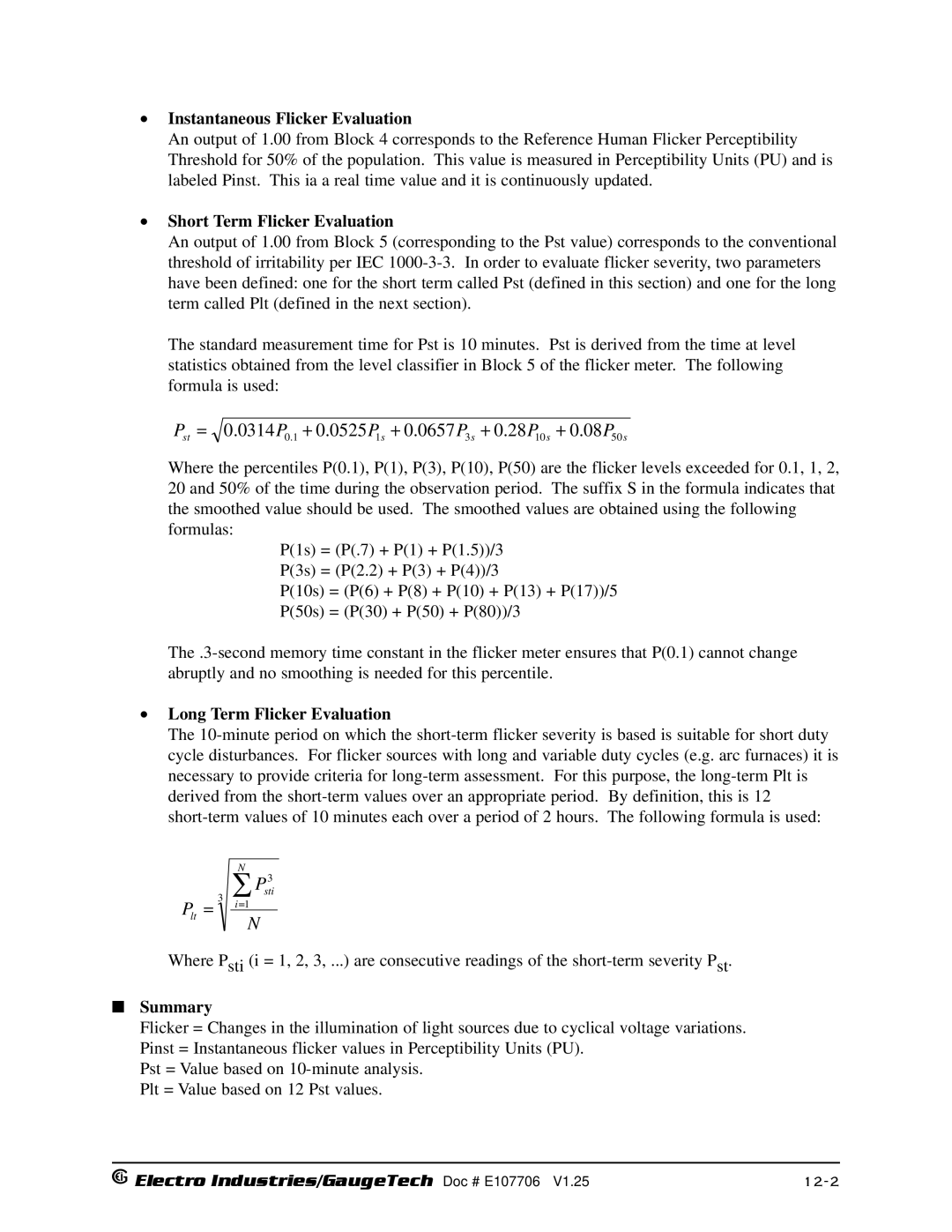
•Instantaneous Flicker Evaluation
An output of 1.00 from Block 4 corresponds to the Reference Human Flicker Perceptibility Threshold for 50% of the population. This value is measured in Perceptibility Units (PU) and is labeled Pinst. This ia a real time value and it is continuously updated.
•Short Term Flicker Evaluation
An output of 1.00 from Block 5 (corresponding to the Pst value) corresponds to the conventional threshold of irritability per IEC
The standard measurement time for Pst is 10 minutes. Pst is derived from the time at level statistics obtained from the level classifier in Block 5 of the flicker meter. The following formula is used:
Pst = ![]() 0.0314P0.1 + 0.0525P1s + 0.0657P3s + 0.28P10s + 0.08P50s
0.0314P0.1 + 0.0525P1s + 0.0657P3s + 0.28P10s + 0.08P50s
Where the percentiles P(0.1), P(1), P(3), P(10), P(50) are the flicker levels exceeded for 0.1, 1, 2, 20 and 50% of the time during the observation period. The suffix S in the formula indicates that the smoothed value should be used. The smoothed values are obtained using the following formulas:
P(1s) = (P(.7) + P(1) + P(1.5))/3
P(3s) = (P(2.2) + P(3) + P(4))/3
P(10s) = (P(6) + P(8) + P(10) + P(13) + P(17))/5 P(50s) = (P(30) + P(50) + P(80))/3
•Long Term Flicker Evaluation
The
∑Psti3
Plt = 3 i=1NN
Where Psti (i = 1, 2, 3, ...) are consecutive readings of the
Summary
Flicker = Changes in the illumination of light sources due to cyclical voltage variations. Pinst = Instantaneous flicker values in Perceptibility Units (PU).
Pst = Value based on
Electro Industries/GaugeTech Doc # E107706 V1.25 |
